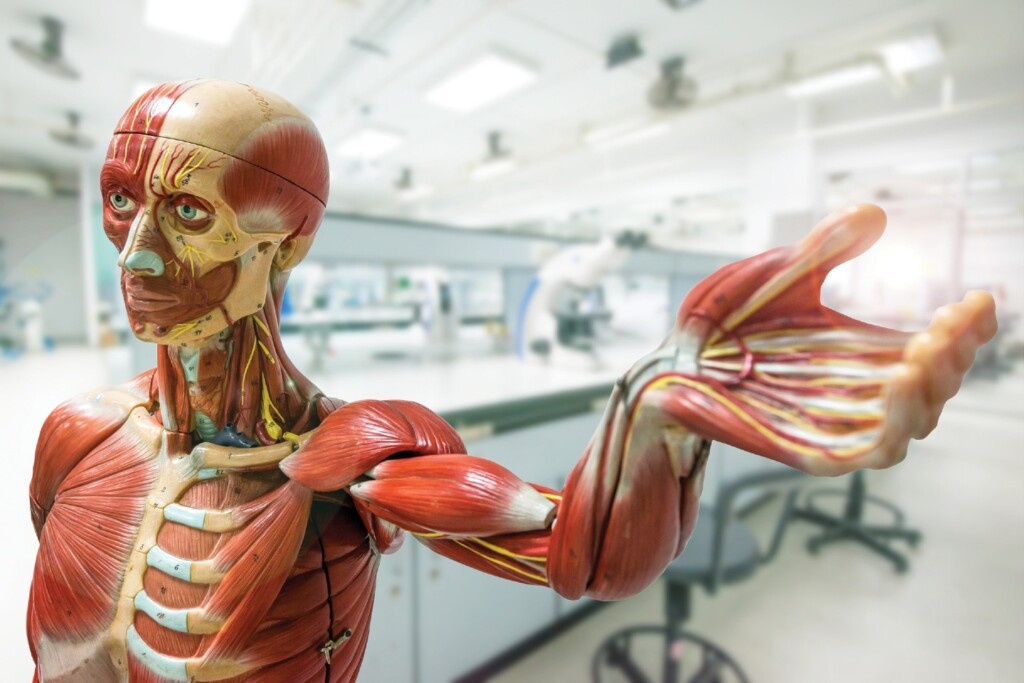Every teacher faces challenges in the classroom, but for teachers of anatomy and physiology (A&P)–a crucial course that acts as a gatekeeper for many allied health programs–the hurdles can be unique and are critical to overcome for students to advance in their career pathways.
Here are some of the challenges A&P teachers shared with us and some solutions.
- Let’s face it–there are high failure and dropout rates in A&P courses.Some students are ill prepared and have no familiarity with the topics; some students have poor study skills and are overwhelmed by the amount of material they need to know.
- Solution: Keep students motivated and engaged by using hands-on investigations that deepen their understanding of body systems. Provide anatomical models that learners can manipulate as they memorize content. Encourage them to form ongoing study groups with other students to keep up with the material so they’re prepared for tests. As every A&P educator knows, trying to cram before A&P tests often ends in poor test scores.
- Students choose to opt out of self-measurement. They may not want to jab themselves to obtain a blood sample or are surprised when asked to use a sample of their own urine to explore kidney function.
- Solution: Some students can be squeamish about body fluids. To help them overcome the “eeww” factor, provide simulated blood and urine for testing. These synthetic products offer the authenticity of real body fluids without any risk–or skin pricks.
- It’s challenging to get students to follow correct lab techniques and is exhausting to constantly have to repeat procedures you have already thoroughly explained, particularly if you’re explaining these procedures to multiple classes.
- Solution: Use videos. Either make a video of yourself as you demonstrate proper procedures or take advantage of free online videos that discuss safety equipment and lab techniques. Then when students need a refresher, save your breath (and your sanity) by playing the video.
- When it’s time to test, students need review materials that include vocabulary. The specific terminology designed to ensure precise communication is unfamiliar and akin to learning a foreign language to some.
- Solution: Remember those study groups? Advise group members to create review materials as part of their study efforts for test preparation. Guide them to online resources that can help them prepare. Remind students that the terminology can often be decoded by revisiting what they’ve learned about Greek and Latin word roots.
- Students need to see both typical and atypical histology. They need to have a better understanding of the four main tissue types of the human body and their functions.
- Solution: Start by reviewing the microscope and how it works, how to calculate total magnification, and the importance of resolution and depth of field. Then provide slides to compare. Start with slides of normal tissue, and then introduce slides that demonstrate pathological conditions.
- Even though A&P devours time both in and out of class for students as well as instructors, there still is not enough student contact time. Students are visibly stressed, so there needs to be more opportunity to connect before the stress is reflected in their grades.
- Solution: Carve out more time for your students by using lab kits that save prep time. Make sure the kits give you access to digital materials that can save time for both you and your students, such as quick-to-watch videos and lab investigation sheets that students can complete online. In the classroom, encourage students to ask you questions and remind them that you are there to help and want them to succeed.
- There have been myths that certain ethnicities have differences in anatomy and diseases. Students should be exposed to racially sensitive information to help dispel these myths.
- Solution: Set the record straight with genetics. The genome contains powerful insights about human biology and can be used to introduce genetic similarity and variation.
- Massive, content-laden units like those for the skeletal and muscle systems are intimidating. After all, a human adult has 206 bones and more than 650 named skeletal muscles, which requires a lot of memorization in a short amount of time.
- Solution: Tell students to try and visualize what they’re learning about. As they delve into skeletal and muscle systems, have students locate their own bones and muscles. Use anatomical models, dissections, and illustrations so they can see the structures and how they interact. Advise them to study in bursts instead of cramming, then review and repeat what they’ve already learned until it becomes second nature.
- In physiology, students need to investigate different levels of body systems’ organization simultaneously. This makes the subject very complex to teach and learn.
- Solution: Students need to have a clear understanding of anatomy as they learn about physiology. Provide anatomical models, dissection opportunities, and kits that let them manipulate the body parts and see how they function in conjunction with each other. Tell students to not just memorize but to try and make connections. Guide them to approach learning in multiple ways, such as explaining what they’ve studied to you or another student, drawing and coloring the systems, and creating mnemonics.
- After teaching classes, meeting with students and other faculty, and grading tests and quizzes, there is very little time left for planning upcoming lessons. Planning time often means giving up the little bit of personal time that’s left at the end of the day.
- Solution: Partner with other A&P educators to plan lessons, and look for time-saving resources and kits that can help. When planning your lessons, include opportunities for student groups to explore the objectives during class, giving you the chance to craft and tweak your upcoming lessons as you interact with the groups. At the end of the workday, save some nonnegotiable time for yourself to recharge so you’re ready for the next day’s challenges.
- Solution: Partner with other A&P educators to plan lessons, and look for time-saving resources and kits that can help. When planning your lessons, include opportunities for student groups to explore the objectives during class, giving you the chance to craft and tweak your upcoming lessons as you interact with the groups. At the end of the workday, save some nonnegotiable time for yourself to recharge so you’re ready for the next day’s challenges.



